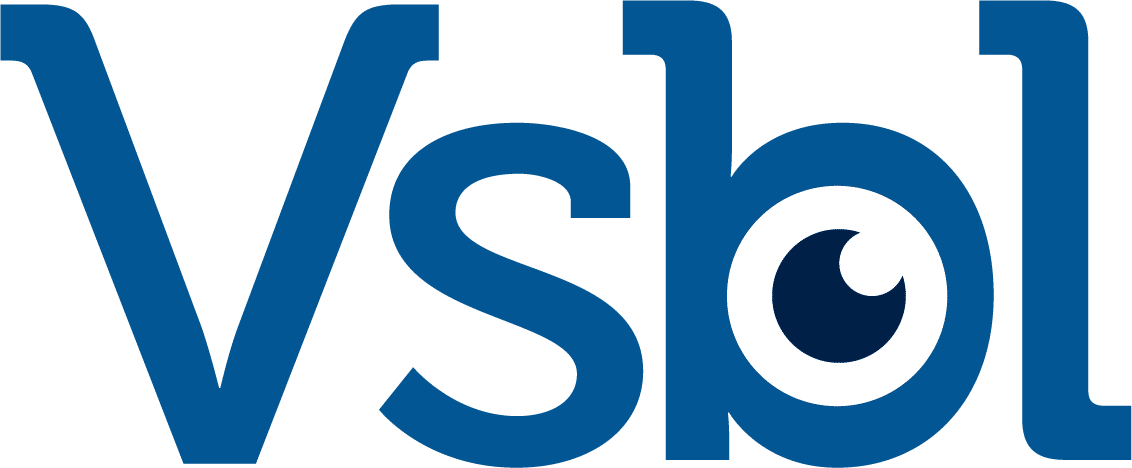Capturing your audience’s attention on social media can be a challenging task. The competition for attention is fierce, with countless posts flooding users’ feeds every second.
However, with the right strategies and techniques, you can rapidly create social media posts that stand out and resonate with your target audience.
This article will guide you through 8 steps to craft social media posts that quickly grab attention, increase online visibility, and drive results.
Let’s begin crafting a winning content plan that lays the foundation for attention-grabbing posts, starting with goal setting.
1. Set your content goals
Before diving into social media posting and content creation, defining your objectives is essential.
Goals provide direction and purpose for your social media efforts. They help you stay focused, measure your progress, and determine the success of your content strategy.
Your content goals will vary depending on your unique circumstances and objectives, but they generally fall into several categories:
- Brand awareness: Increase visibility, gain followers, and encourage mentions and shares.
- Engagement: Foster interactions and boost likes, comments, and shares.
- Website traffic: Drive clicks to your site from social media posting.
- Lead generation: Generate sign-ups, downloads, or purchases.
- Community building: Grow a loyal and engaged community and encourage discussions and user-generated content.
- Content promotion: Promote specific content pieces and measure reach and engagement.
To set your content goals effectively, consider the SMART criteria:
- Specific targets: Define precise, industry-relevant goals for acquiring quality followers within a specified timeframe.
- Measurable success: Use metrics like engagement, lead generation, conversions, and pipeline growth to gauge progress effectively.
- Realistic objectives: Set attainable goals aligned with available resources and time constraints.
- Strategic alignment: Ensure each goal contributes meaningfully to B2B objectives like lead generation and revenue growth.
- Timely goals: Establish clear timeframes for achieving social selling milestones, such as nurturing leads into sales-qualified leads (SQLs) within a quarter or generating revenue in the fiscal year.
Once you’ve set your content goals, the next step is to discover your audience on social media.
2. Discover your audience on social media
Understanding your audience is at the heart of creating content that resonates and grabs attention.
To craft social media posts that connect with your target audience, you need to gain deep insights into the demographics, interests, behaviors, and preferences of the people you want to reach through your social media efforts. Here’s why it’s crucial:
- Relevance: Tailor your content to match your audience’s interests and needs before posting it on social media.
- Engagement: Optimize content formats, posting times, and messaging strategies for interaction.
- Growth: Use insights to expand your reach, attract new followers, and build loyal fans or customers.
- Content ideas: Gain inspiration for compelling content that addresses your audience’s challenges and passions.
Next, let’s learn how to identify and connect with your target audience on social platforms to create content that resonates:
- Audience data collection: Start by gathering basic demographics like age, gender, location, and occupation from social media analytics tools.
- Psychographic insights: Dive deeper into interests, values, attitudes, and behaviors through surveys, social listening, and research to understand what drives your audience.
- Competitive analysis: Study competitors and influencers in your niche to identify common traits and preferences among their followers.
- Engage actively: Join relevant conversations on social media platforms, interact with your audience, and ask questions to learn more about their needs and interests.
- Utilize analytics: Leverage social media tools like Facebook Insights, Twitter Analytics, LinkedIn Analytics, and Sales Navigator for data.
- Create buyer personas: Build detailed buyer personas based on gathered data to represent different audience segments, encapsulating typical follower traits and interests.
- Iterative approach: Continuously monitor content performance and adjust your content plan based on which content types resonate the most with your audience.
After understanding your social media audience, let’s explore how to analyze your competitors and their strategies.
3. Understand your competitors and their strategies
In social media, your competitors are not just rivals; they can also be valuable sources of inspiration and insights.
By closely examining your competitors’ social media strategies, you can uncover opportunities, learn from their successes and mistakes, and refine your social media content planning.
It is crucial for several reasons:
- Benchmarking: Measure your posting to social media performance against industry standards and find areas for improvement.
- Ideation: Gain inspiration for new post ideas by analyzing what resonates with your shared audience.
- Differentiation: Identify gaps where you can offer something unique or superior to your audience.
- Error avoidance: Learn from your competitors’ mistakes to avoid similar pitfalls in your content strategy.
Let’s gain insights into your competitors’ tactics and strategies to refine your social media approach:
- Competitor identification: Find direct and indirect competitors on social media in your industry or niche.
- Content analysis: Explore competitors’ profiles to understand their content themes, formats, and frequency of posting on social media.
- Engagement metrics: Pay attention to engagement indicators like likes, comments, shares, and follower growth to identify resonating content.
- Audience insights: Analyze comments on competitors’ posts to understand shared audience questions, concerns, and interests.
- Optimal posting times: Observe when competitors post on social media for potential insights into peak engagement times.
- Influencer partnerships: Check if competitors collaborate with influencers or industry experts for potential partnership opportunities.
- Ad strategy: Examine competitors’ paid advertising campaigns for insights into ad content and targeting strategies.
- SWOT analysis: Evaluate competitors’ social media strategies through a SWOT analysis to identify strengths, weaknesses, opportunities, and threats in their approach.
Having dived into competitor analysis, let’s focus on evaluating your social media presence.
4. Evaluate your current social media presence
Before you embark on creating a new content marketing plan, it’s essential to examine your existing social media presence closely. An honest assessment of your current status will help you identify strengths to build upon and areas that require improvement.
Here is why it’s important:
- Baseline measurement: Establish a baseline for measuring your new content plan’s effectiveness.
- Gap identification: Identify strategy gaps, underperforming posting to social media, engagement opportunities, and neglected platforms.
- Audience insights: Gain valuable insights into your current audience’s preferences, engagement patterns, and resonating content types.
- Competitive comparison: Compare your current performance with competitors to find opportunities for a competitive edge.
Let’s decide how to assess your existing social media presence to identify strengths and areas for improvement in your content strategy:
- Platform performance: Evaluate your active social media platforms based on follower growth, engagement rates, and content reach. Identify the most effective platforms aligning with your goals.
- Content effectiveness: Analyze recent posts for top-performing content, considering engagement metrics. Learn from underperforming posts to improve future content.
- Audience insights: Understand your current audience’s demographics, interests, and behaviors to tailor your content plan effectively.
- Competitor benchmarking: Compare your social media presence to competitors, noting follower count, engagement, and overall strategy. Identify areas for differentiation or improvement.
- Posting strategy: Review your content planning calendar and posting on a social media schedule. Optimize posting times and frequency to align with audience expectations.
- Feedback integration: Pay attention to audience feedback and comments. Address recurring questions, concerns, or suggestions in your content plan to enhance audience satisfaction.
- Analytics utilization: Leverage social media analytics tools like Facebook Insights, Twitter Analytics, and LinkedIn Analytics for valuable performance data.
- Goal realignment: Ensure your current social media presence aligns with initial content goals. Adjust or refine goals to stay on track with your B2B objectives.
Once you’ve assessed your social media presence, create an effective content plan.
5. Create a social media content plan
With a solid understanding of your audience, competitors, current social media presence, and competitors’ landscape, it’s time to roll up your sleeves and create a comprehensive content planning approach.
A content marketing plan provides structure and purpose to your social media efforts. It ensures your posts align with your goals, audience preferences, and overall strategy. Here’s why it’s crucial:
- Consistency: Maintain a regular social posting schedule to engage and inform your audience.
- Efficiency: Streamline content creation by planning and scheduling posts in advance.
- Goal achievement: Design your plan to meet specific content goals, such as engagement, website traffic, or sales.
- Adaptability: Create an adaptable plan to effectively respond to changing circumstances and trends.
Let’s uncover how to develop a comprehensive content plan that aligns with your goals and engages your audience effectively:
- Clear objectives: Define content objectives aligned with your B2B or personal goals.
- Content categories: Identify audience-resonating themes, such as educational content, product promotions, behind-the-scenes insights, and user-generated content.
- Structured calendar: Create a content planning calendar outlining post schedules, optimal posting times, and timely content.
- Diverse formats: Choose content types like text, images, videos, infographics, polls, and stories to keep your feed engaging.
- Guidelines for consistency: Develop content guidelines covering tone, branding, and aesthetics for a recognizable brand identity.
- Engagement plan: Outline strategies for audience engagement, including responding to comments, initiating conversations, and participating in relevant discussions.
- Efficient posting: Decide posting frequencies for each platform and automate posts with social media management tools.
- Streamlined creation: Detail content creation and approval processes, specifying responsibilities if you have a content team.
- Effective promotion: Plan content promotion organically and through paid advertising, identifying channels and strategies to maximize reach.
- Performance metrics: Define key performance indicators (KPIs) such as engagement rates, click-through rates, conversion rates, and follower growth.
- Continuous improvement: Regularly review content planning performance using analytics data to refine your strategy over time.
With your content strategy plan in place, let’s promote your social media posts with your content plan in place.
6. Promote your social media posts
Creating high-quality content is just one piece of the puzzle. To maximize the impact of your social media content, you need to ensure it reaches your target audience effectively.
Promoting your posts is vital in getting your content in front of the right eyes and increasing its chances of grabbing attention. It is crucial for several reasons:
- Expanded reach: Reach a broader audience, including non-followers, to overcome organic reach limitations.
- Targeted exposure: Utilize powerful targeting options to ensure your content reaches the most relevant audience based on demographics, interests, and behaviors.
- Boosted engagement: Enjoy higher engagement rates with promoted posts as they gain more prominent visibility in users’ feeds.
- Objective achievement: Effectively achieve specific content plan objectives, such as driving website traffic or generating leads through paid promotions.
Let’s discover strategies for promoting your content to expand reach and increase engagement on social platforms:
- Platform selection: Choose platforms aligned with your content and audience. Not all platforms work equally well for all goals.
- Budget planning: Define your promotion budget, considering daily or lifetime spending options for cost-effective social media advertising.
- Precise audience targeting: Utilize platform targeting tools to define your ideal audience by age, location, interests, behavior, and occupation.
- Ad format selection: Opt for ad formats that best match your content and objectives, like photo ads, video ads, or carousel ads.
- Compelling creatives: Craft attention-grabbing ad copy and visuals with a solid call to action (CTA) to effectively convey your message.
- Strategic scheduling: Decide when to run promoted posts, considering your target audience’s time zones and online habits.
- Continuous monitoring: Regularly assess promoted post-performance through platform analytics. Adjust campaigns based on what works best.
- A/B testing: Experiment with different ad variations, testing headlines, images, CTAs, and audience segments to optimize campaigns.
- Data-driven insights: Leverage platform-provided reports to evaluate ROI and make informed decisions based on campaign performance.
- Retargeting strategy: Implement retargeting to re-engage users who’ve interacted with your content or website, increasing conversion chances.
- Guideline adherence: Ensure compliance with platform advertising guidelines and policies to prevent promotion rejection.
After promoting your social media posts, it’s vital to shift our focus to evaluating your content and measuring the results.
7. Evaluate your content and measure results
Creating and promoting social media content is an ongoing process, and it’s crucial to assess your efforts’ effectiveness regularly. By evaluating your content and measuring results, you can make data-driven decisions to refine your content plan and achieve better outcomes.
The evaluation and measurement of your social media content are essential for several reasons:
- Performance assessment: Evaluate content against goals and KPIs.
- Optimization: Identify areas for improvement and optimize your content strategy, posting schedule, and engagement tactics.
- Audience insights: Gain insights into audience preferences and behaviors to create more tailored, attention-grabbing content.
- ROI analysis: Crucial for businesses and marketers, measure results to calculate the return on investments of social media efforts and justify advertising spend.
Let’s learn how to measure the effectiveness of your content and make data-driven adjustments for better performance:
- Engagement analysis: Review key metrics like likes, comments, shares, click-through rates, and conversions to identify top-performing content.
- Audience growth: Monitor follower or subscriber growth rates, noting any spikes or declines in audience size.
- Reach measurement: Measure social posting reach and impressions to gauge content exposure.
- Clicks and conversions: Assess link clicks and conversions, such as sign-ups, downloads, or purchases driven by your social media efforts.
- Platform analytics: Use social media tools like Facebook Insights, Twitter Analytics, LinkedIn Social Selling Index, and LinkedIn Analytics for valuable data.
- Audience feedback: Pay attention to audience feedback and comments, addressing questions, concerns, and suggestions to refine your content strategy.
- Goal comparison: Evaluate performance metrics against your content plan objectives to assess progress.
- Competitor benchmarking: Continuously monitor competitors to identify areas for improvement or differentiation.
- ROI assessment: If applicable, calculate the ROI of social media advertising campaigns by comparing costs with revenue or value achieved.
- Regular reporting: Create concise reports summarizing findings and insights for future content strategies and stakeholder sharing.
- Adapt and evolve: Based on evaluation results, make necessary adjustments to your content plan, experimenting with new formats, posting times, or engagement strategies to adapt to the dynamic nature of social media.
Once you’ve evaluated your content and measured the results, let’s explore how to use tools to enhance your social posts further.
8. Use content planning software to boost your social posts
Having the right tools at your disposal can make a significant difference in the effectiveness of your content strategy plan.
Various tools and resources are available to help you streamline your efforts, enhance the quality of your posts, and optimize your social media strategy.
Using tools to support your social media efforts offers several advantages:
- Efficiency: Automate tasks like scheduling posts, tracking analytics, and monitoring conversations to save time and effort.
- Enhanced creativity: Use creative tools to design eye-catching graphics, edit videos, and add visual appeal, even without professional design skills.
- Analytics: Gain deeper insights into content performance for informed decision-making and adjustments.
- Scheduling and planning: Schedule social media posts in advance for consistency and free up time for strategic activities.
- Competitive analysis: Access competitive analysis features to gain insights into competitors’ strategies and performance.
- Audience research: Conduct audience research, discover trends, and find relevant hashtags to optimize content visibility.
Let’s explore a range of content planning tools to enhance your social media efforts, from content creation to analytics and engagement.
- Social selling tool: Vsbl is a powerful social selling platform that streamlines your social media efforts, enhances engagement, and boosts overall sales performance.
- SMM platforms: Social media posting platforms like Hootsuite, Buffer, and Sprout Social allow you to schedule posts, manage multiple social media accounts, and track analytics from a single dashboard.
- Content creation and design tools: Canva, Adobe Spark, and Crello are excellent platforms (with AI for social media posts) for creating eye-catching graphics and visuals for your posts.
- Analytics and insights tools: In addition to platform-specific analytics, tools like Buzzsumo, Brandwatch, and Socialbakers offer in-depth insights into your social media performance.
- Content curation tools: Use tools like Feedly to discover and curate relevant content from around the web to share with your audience.
- Social listening tools: Tools like Brandwatch and Mention allow you to monitor social media conversations and track brand mentions, helping you stay informed about what people say about your brand or industry.
- Automation tools: Platforms like Zapier and IFTTT (If This, Then That) can automate various tasks and integrations between social media platforms and other apps.
- Image and video stock libraries: For high-quality visuals, consider using stock image and video libraries like Shutterstock, Getty Images, and Unsplash.
Now that you’ve learned how to make social media posts that grab attention in 8 steps, it’s time to start building your social media presence.
Start building your social media presence with social selling
Now that you’ve learned how to create a well-rounded social media content plan, it’s time to put your knowledge into action and build your social media presence.
Here are some tips to help you take those crucial first steps toward establishing a meaningful and attention-grabbing presence on social media:
- Platform selection: Focus on platforms where your B2B audience is active. For instance, consider LinkedIn and Twitter if your Ideal Customer Profile (ICP) is B2B.
- Optimized profiles: Ensure professional profiles with clear images, engaging bios, and website links.
- Consistent posting: Maintain a regular posting schedule for trust and anticipation.
- Authentic engagement: Build relationships by responding to comments, asking questions, and joining discussions in your industry groups.
- Visual appeal: Invest in high-quality visuals like infographics or product images for higher engagement.
- Value-driven content: Share informative articles, case studies, or industry insights to provide value.
- Strategic hashtags: Use industry-specific hashtags to broaden content reach.
- Networking: Collaborate with industry peers, attend virtual events, and engage with influencers in your niche.
- User-generated content: Encourage customers to share success stories or testimonials about your B2B solutions.
- Data-driven strategy: Analyze content performance through analytics to refine your B2B content plan over time.
As you enhance your social media presence, consider leveraging Vsbl as your essential social selling companion. Vsbl offers a robust platform designed to streamline your social media efforts and elevate your performance in the social selling landscape.
With Vsbl, you can:
- Efficiently schedule and automate posts: Save valuable time by scheduling and automating your sales-oriented social media posts in advance, ensuring a consistent and professional presence.
- Gain in-depth performance insights: Access deep insights into your social media analytics to measure the impact of your content on your strategic goals.
- Discover highly relevant content: Utilize Vsbl’s content discovery features to uncover trending topics and content ideas that resonate with your audience, keeping them engaged.
Ready to elevate your social media presence and excel in social selling? Take Vsbl for a spin today and unlock the essential tools you need to thrive.









